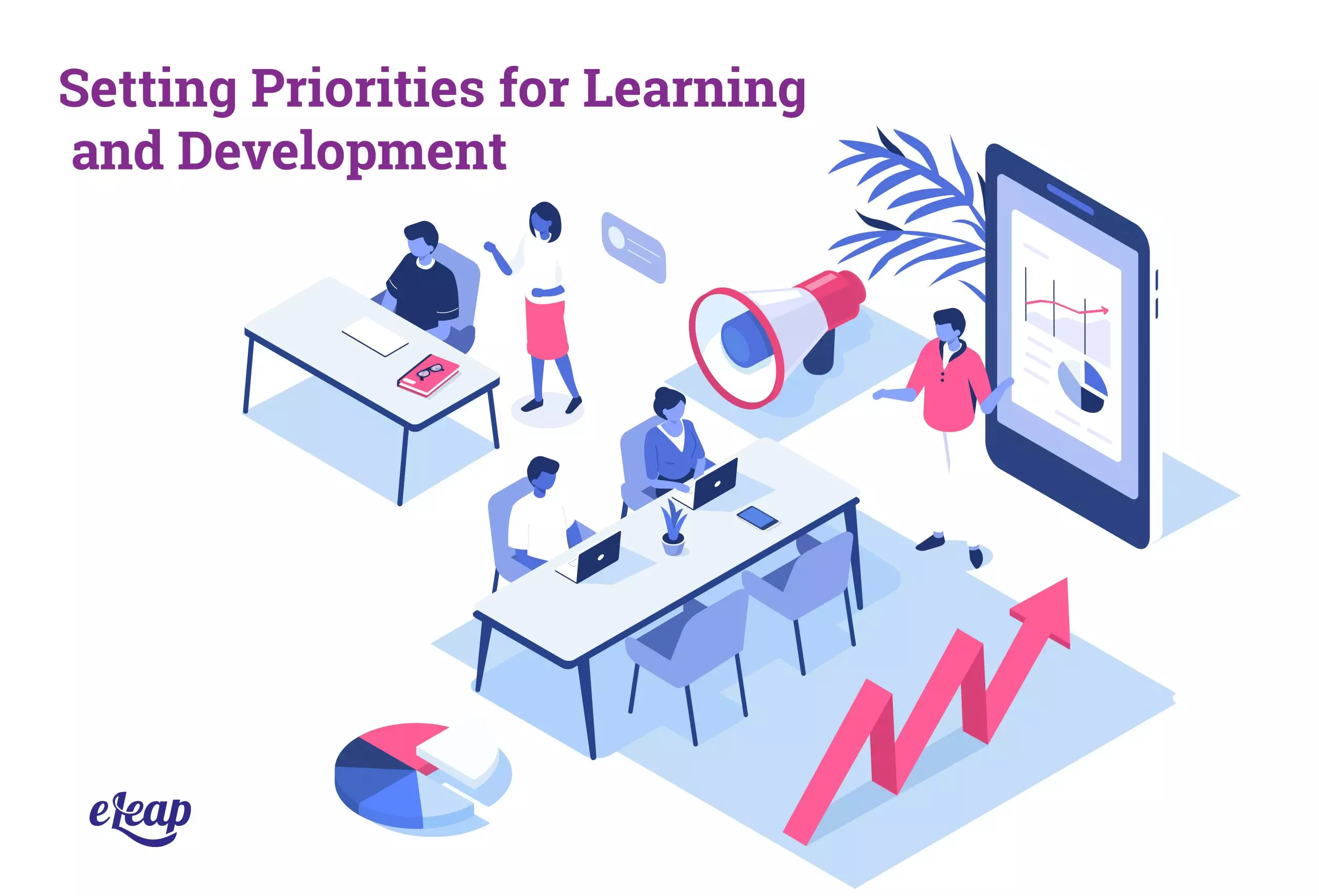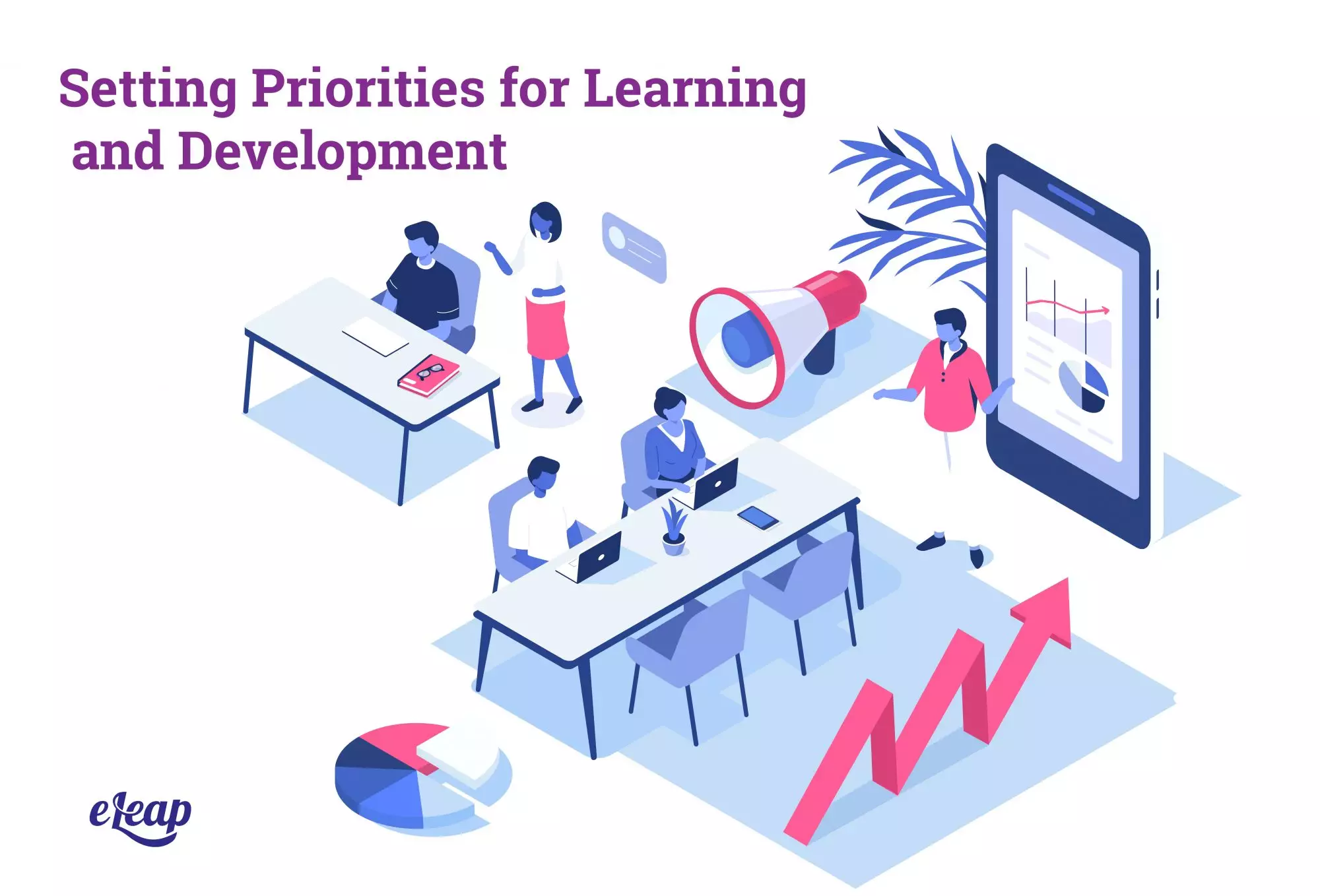Setting Priorities for Learning and Development

Learning and development initiatives are critical to the success of your organization. They’re also essential for professional development and may even tie into the personal satisfaction of your employees. However, not all L&D efforts have the same value or urgency. You must be able to set priorities and ensure that everything moves forward correctly.
The challenge here is determining what priority to assign to the various tasks. Is a mandatory corporate training module a higher priority than professional CE? It depends on when the CE is required and whether or not you’re out of compliance with mandatory corporate training requirements.
There’s no simple answer here. You cannot simply say that A has a higher priority than B at all times, and C always comes in third. There are times when A will be last, C will be first, and B will have to wait a month or two.
However, prioritizing L&D initiatives doesn’t have to result in hair-pulling frustration. The tips we’ve collected below will help smooth the process for you.

1. What Is a Priority?
First, start by understanding what makes something a priority. Pressure from executives doesn’t make a difference one way or another. The same thing applies to sentiment. Instead, consider the following questions:
- Does it impact the ability to achieve success in a project or initiative?
- Is it driven by your strategic plan?
- Is the task both urgent and important?
- Does it have a high impact and effectiveness?
- Does it affect upcoming opportunities?
- Does it affect project deliverables?
- Does it close skills gaps?
These are examples of things that should be seen as a priority. However, determining whether something is or is not a priority can still be challenging.
2. What Are Your Priorities?
While you might understand what a priority is, you may not have defined the priorities within your L&D initiatives. You’ll want to base your learning and development priorities on:
- Evaluations of target outcomes versus actual outcomes
- Case studies showing the outcomes of past efforts
- Organization-wide strategic objectives and team objectives based on an overall strategic plan
- In-depth conversations with C-suite/senior leaders
- Key performance indicators
- OKRs
- Upcoming needs for employee positions
- Upcoming needs for projects and programs
- Areas where your organization might face exposure or liabilities
3. Keep Asking Questions
Once you’ve defined your priorities, you’re still not done. You will need to ask some additional questions and continue studying the situation. These questions include the following:
- Do you have buy-in from leadership? Without support and adoption from the top, your L&D efforts are going to be frustrated. Often, a lack of buy-in from higher-ups could be due to cultural problems within the organization, which can also only be fixed with the help of leadership, but that will need to happen before anything can change with learning and development.
- Are your goals realistic? It’s tempting to try to change the world, but remember that doesn’t happen overnight. Change should be incremental. Meet incremental L&D requirements and rules, and then do it again. Each step will bring you closer to your larger goal.
- Can project/initiative leaders visualize the goals? If they cannot, you’ll find it harder to achieve the results you need. You might even find that it affects leadership buy-in, as well.
- Do your L&D plans integrate/dovetail with wider organizational goals? If they do not, you’ll lack buy-in, but the effort may ultimately lack relevance, as well.
- What value will the L&D project bring? Define valuable outcomes from the project as clearly as possible and make sure that information is communicated to leaders and managers.
- How will existing processes be affected? What sort of time requirements will be necessary? What resources will be affected? How will the project affect the workload?
- What resources are needed, which ones are readily available, and which ones will need to be located or reallocated from elsewhere?
- How will learning be sustained moving forward? How will you ensure continued relevance into the future in terms of learning content, alignment with objectives, and industry rules and regs?
With those questions out of the way, it’s time to move on to some other important considerations. These include the following:
- What delivery method will be used? This is important as it will affect everything from content type to cost. Will you be going the eLearning route? The in-person training route? Following a hybrid training module?
Each offers something different, but eLearning is generally the most flexible, affordable, and accessible, followed by hybrid learning for certain situations. Pure in-person learning is increasingly rare across all industries.
- What training and development of content types will be necessary? This is a critical consideration for several reasons. Will you need interactive content? Instructor-led content? Gamified content that’s available through mobile devices? Each type of content comes with its own set of variables, including development time and costs, accessibility considerations, applicability for learning content type, and so much more.
- Have you balanced the cost to value ratio? It’s tempting to go the low-cost route with your training content. After all, the less you spend, the happier those who hold the purse strings will be. However, don’t forget that there’s often a negative correlation between content value and applicability with cost to develop.
- What that means is simple: the lower the cost to develop content, the lower the value to the learner, and the less applicable the content will be to individuals. In short, you end up with low-value, generic content that’s just one step above not having any training content at all.
4. Evaluate and Measure
Finally, understand that what is a priority now might not be one in the future. It’s important to constantly evaluate and monitor so that you can make necessary changes as required. This will also help ensure that you’re up to date with changes to industry rules or government regulations, as well as the changing needs and expectations of your learners themselves.
Ultimately, prioritizing your L&D initiatives requires careful planning, communication between HR and leadership, and an understanding of the technologies employed and how things will change moving forward.